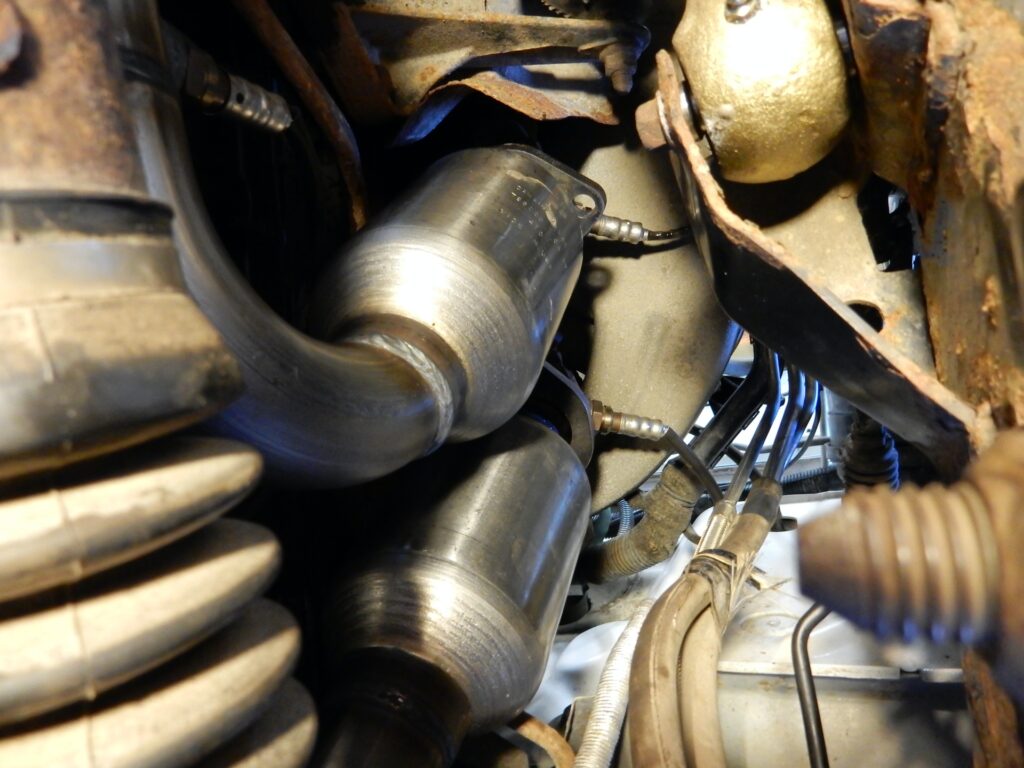Continuing on from part 1 we have completely removed the old exhaust from the manifold to the tail pipe including the old O2 sensors in the manifold. Now starting from the engine we assemble the new aFe system.
The new O2 sensors were installed in the manifold and the y-pipe before any parts were started to be installed. We borrowed an O2 installation tool from a local parts store to make installation easier and less prone to damage.

O2 sensor tool
With the sensors installed position the y-pipe into position and begin the process of swearing while attempting to get the bolts to line up. It will require some bloody knuckles, prying and pushing. Be careful to not damage the wiring leads on the O2 sensors. Tighten the y-pipe to the manifold only slightly, there may be some adjustment to be made as you go.
The next step is to install the pipe that connects to the large converter. It may require some trimming, we needed to cut a few inches off.
From there install the pipe and cat, the cat has a built in mount that will mount back to the factory mount at the transmission. Attach the muffler and fit up the tail pipe. The tail pipe will use the factory mounts.
At this point the only thing left is to check on proper positioning and install/tighten the supplied clamps and bolts. The wide clamps provided do an excellent job at keeping everything secured.
Install the transmission crossmember and wire up all the O2 sensor plugs. With your fingers crossed start the Jeep. Check for exhaust leaks and note the presence of a check engine light. If you recall the Jeep was showing a check engine light. It turned off and is no longer showing.
The sound of the exhaust is louder and deeper than the factory one but is nowhere near annoying. In general the Jeep’s performance has improved as well as fuel efficiency.
This system wasn’t inexpensive but will be the last this Jeep will ever need. All parts were from Quadratec, check with them for the proper components for your particular Jeep.















